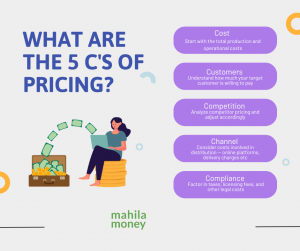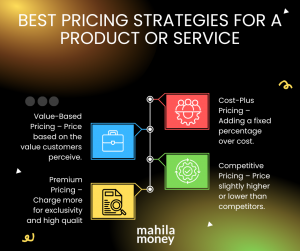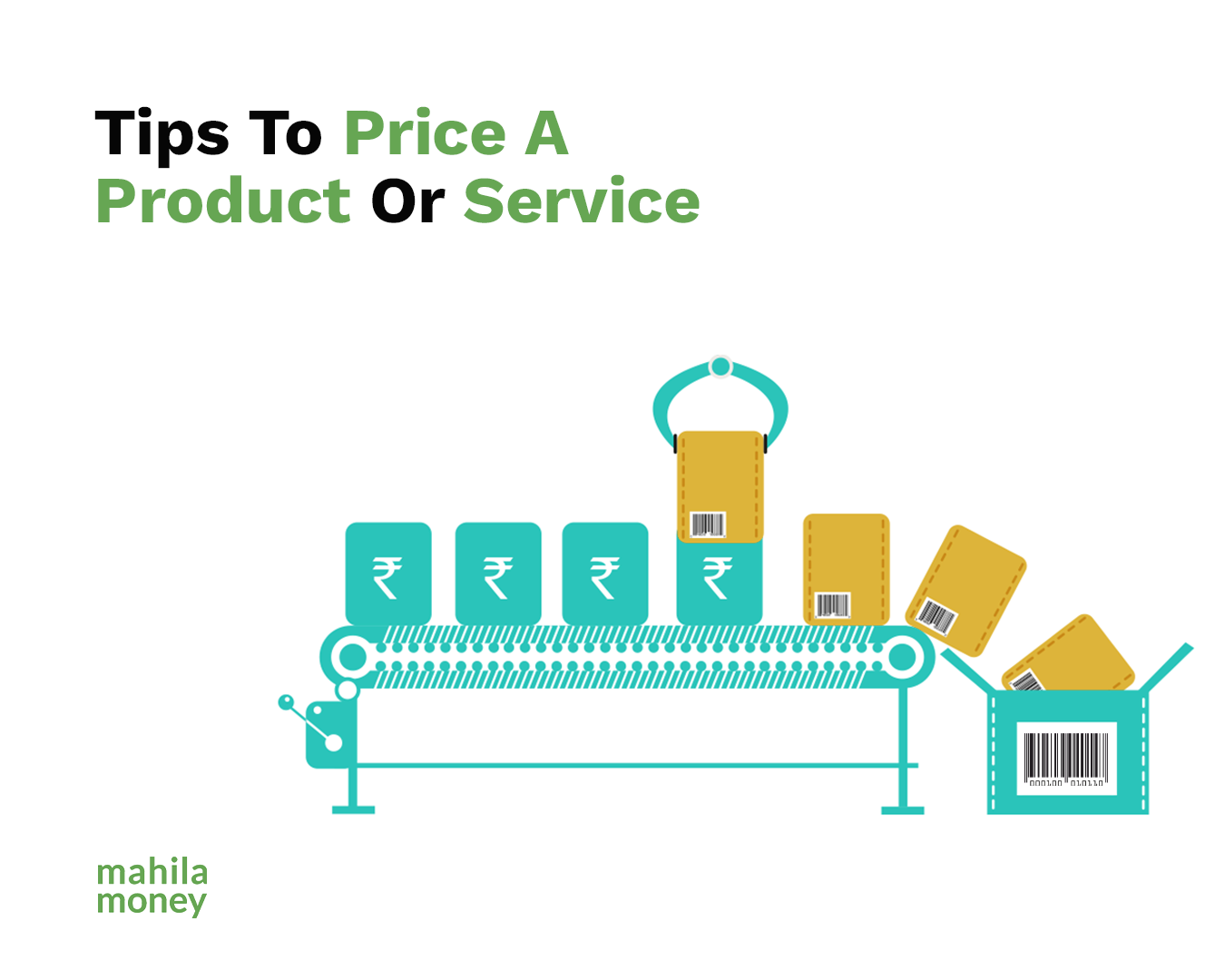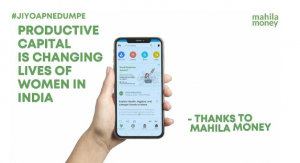Congratulations on creating a great product or service. But now comes the most tricky part of thinking— how to price a product or service to stay profitable. Pricing is not just a number, it is about finding the right balance between what your customers are willing to pay and what ensures your business stays profitable.
For business owners, setting the perfect price requires a lot of market research, data and thoughts. While underpricing might bring in sales, but it could leave you with thin margins or sometimes even losses. On the other hand, overpricing can bring down sales. So, how to price a product to sell while maintaining profitability?
In this blog, we’ll cover key factors to consider when setting prices
- What are the 5 C’s of pricing and how to apply them
- The best pricing strategies for small businesses
- Common mistakes to avoid
- Practical tips and examples to help you determine the right price for your product or service
Apply For a Business Loan

Why Pricing Matters for Small Businesses
Pricing is more than just covering costs — it reflects the value you offer to your customers and impacts how your brand is perceived. For any business owners, setting the right price reflects Profitability, Market Positioning and Customer Retention.
Imagine you operate a business that sells handmade scrunchies for ₹300, but your cost for each unit is ₹200, which means your profit is only ₹100. When you factor in additional costs such as shipping fees and platform charges, you may discover that you’re left with little to no profit—or even a loss. Understanding how to price products or services for a small business is important to ensure that you not only cover expenses but also make enough profit to expand your business.

Things to Consider When Pricing a Product or Service
Below are a few things to keep in mind while setting price for your products or services to stay profitable.
1. Cost of Goods Sold (COGS)
So, what is the best pricing strategy for a product? Your price will need to recover the entire cost of making and shipping your product or service, as well as the cost of goods sold (COGS). Following are some things to keep in mind:
- Raw materials – The price of ingredients or components.
- Labor – Expenses incurred to produce the product or deliver the service.
- Packaging – Cost of boxes, labels, or wrapping material.
- Shipping and handling – Courier or delivery charges.
- Platform fees – If you’re selling on an online platform (like Amazon or Flipkart), factor in their commission.
For example, let’s say you’re selling handmade jewelry. If the raw materials cost ₹100, labor comes to ₹50, packaging is ₹20, platform fees are ₹30, and shipping costs ₹50 — your total cost of goods sold (COGS) would be ₹250. In order to make a profit, your product must be priced above ₹250.
2. Operating Expenses
Beyond just the cost of making your product, you also need to factor in the day-to-day expenses of running your business. This includes things like rent for your workspace, utility bills (like electricity and internet), staff salaries (if you have a team), marketing costs, and even the maintainence of your equipment.
For instance, if your total monthly operating expenses come to around ₹20,000 and you sell about 100 products each month, you’d need to add ₹200 (₹20,000 ÷ 100) to the price of each item just to break even on your operating costs. This ensures that you’re covering your basic business expenses while pricing your product.
3. Profit Margin
To run your business smoothly, you need to set a profit margin after covering production and operational costs. Here are some options to consider:
- Low margin: 10%–20% for budget-friendly products
- Moderate margin: 30%–50% for mid-tier products
- High margin: 50%–100% for luxury items
For example, if your total expenses (costs of goods sold plus operating expenses) are ₹300 and you want a 40% profit margin: 40% of ₹300 is ₹120.
So, the selling price would be ₹300 plus ₹120, which equals ₹420.
This shows how cost-plus pricing works—a straightforward way to set profitable prices.
4. Market Demand
Knowing the demand in market helps you set a price that customers are willing to pay. While high demand allows for higher pricing, low demand may need a more competitive rate. For example, if there’s a growing trend for sustainable products, you can charge a premium price for eco-friendly items since demand is high.
Example:
Due to rising environmental awareness handmade eco-friendly products are in demand. More and more customers are getitng consicous on the items they buy. In this case, you can justify higher pricing without losing your customers.
5. Competitor Pricing
Still thinking what is the best pricing strategy for a product? Well, do not forget to research your competitors’ pricing. If your competitors are pricing similar products at ₹500, setting yours at ₹800 without added value could drive away customers.
- If your product offers higher quality or unique features → You can price higher.
- If your product is similar to competitors → Consider pricing at par or slightly lower.
6. Target Customer Profile
Understand your customers while formulating pricing strategies. Know their purchasing behavior and budget. If your target market is price-sensitive, it’s crucial to keep competitive pricing. However, if your audience prefers exclusivity, you can afford to charge more.
Example:
- Selling handmade soap to college students → Keep prices affordable (₹150–₹250).
- Selling luxury skincare to working professionals → Premium pricing (₹500–₹800) is acceptable.
7. Perceived Value
Customers are usually willing to pay more when they feel a product is truly special. The way something looks, feels, and even how it’s packaged can create a sense of value that goes beyond the actual cost.
For example, a handmade dress crafted from organic fabric and detailed with hand embroidery isn’t just clothing — it shows the effort, and skill that went into making it. The design, and even the care in the packaging can make customers feel like they’re buying something exclusive and not just another dress. Remember,when a product tells a story without compromising on quality, people are more likely to pay a premium for it.
8. Psychological Pricing
The way a price is presented can influence how customers perceive its value. Small adjustments in pricing can make a product feel more affordable or appealing without actually reducing its value.
- Charm Pricing: Setting the price at ₹499 instead of ₹500 makes it feel cheaper, even though the difference is just one rupee. That ‘9‘ at the end tricks the brain into thinking it’s a better deal.
- Bundle Pricing: Offering two products together at a slightly lower price than buying them separately can encourage customers to spend more while feeling like they’re getting a bargain.
- Prestige Pricing: For premium products, rounded numbers like ₹1000 instead of ₹999 give a sense of luxury and quality. Higher-end customers tend to associate rounded prices with better value.
Conclusion
How to price a product or service isn’t just about covering your expenses, it’s about finding the right balance between making a profit, and meeting customer expectations. When you consider all the important factors and apply the right pricing strategy, you can create a business that not only stays profitable but also builds long-term customer trust loyalty.
Read more:
5 Small Business Packaging Ideas for the Festive Season
8 Ways to Attract Customers with Offers
If you are a woman entrepreneur who wants to take your business to new heights and is in need of working capital and entrepreneurship resources, come speak to us on Mahila Money. For more such #JiyoApneDumPe live conversations, download the Mahila Money App on Play Store or visit us on www.mahila.money





